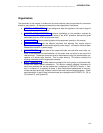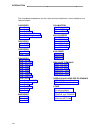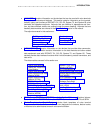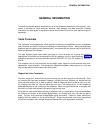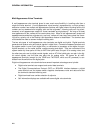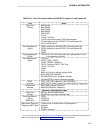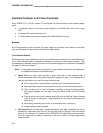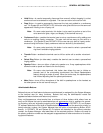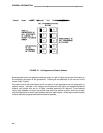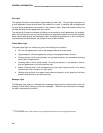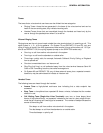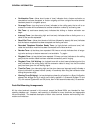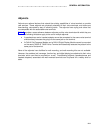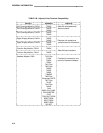
GENERAL INFORMATION
Hold Button—is used to temporarily disconnect from one call, without dropping it, so that
another call can be answered or originated. The user can return to the call on hold.
Drop Button—is used to permanently disconnect the last party added to a conference
call. On System 85 and DEFINITY G2, this button also gives dial tone on the same call
appearance if dialing or on a 2-party call.
Note: On some voice terminals, this button is also used to perform a test of the
voice terminal‘s lights, ringer, and display (if the terminal has one).
Conference Button—enables the terminal user to set up a conference call by adding new
calls to an existing 2-party connection. The user can add as many as five calls to a
conference. (On System 85 and DEFINITY G2 the user can only build a 3-party confer-
ence call using this button; 6-party conference calls can be built by the attendant.)
Note: On some voice terminals, this button is also used to select a personalized
ring from 8 available ringing patterns.
Transfer Button—enables the terminal user to shift an active call to another voice termi-
nal.
Select Ring Button (on older sets)—enables the terminal user to select a personalized
ringing pattern.
Speaker Button—turns on either a listen-only speaker or a 2-way speakerphone which
allows the user to speak and listen to the far-end party.
Note: On some voice terminals, this button also allows the user to initiate an
acoustic test of the surrounding environment (the Reset Speakerphone
feature) through a series of tones. When the tones stop, the speakerphone
has finished adjusting itself for optimal performance.
Mute Button—turns off the microphone of the built-in speakerphone or the handset so
the other person on the call cannot hear you.
Administrable Buttons
Buttons that are not fixed feature buttons are administered (or assigned) by the System Manager
or the terminal user for many functions. Buttons that may be administered include call
appearance/feature buttons and feature-only buttons.
Every multi-appearance voice terminal has a minimum of three buttons while others have as
many as 34 buttons that can be administered as call appearances, that is, positions for answer-
ing incoming calls and originating outgoing calls (see Figure 1). In DEFINITY G1 and System
75, software defaults the first three of these buttons for appearances of the terminal’s primary (or
home) extension number; the System Manager has the option of administering Button #3 dif-
ferently. In DEFINITY G2 and System 85, no buttons are defaulted for the primary extension
number; the System Manager
must
administer all the required positions. Buttons not used for
the primary extension number can be assigned as appearances of other extensions or for activat-
ing optional features.
2-5



